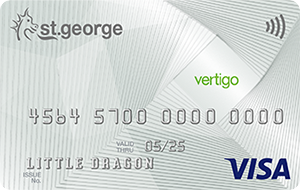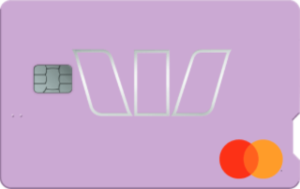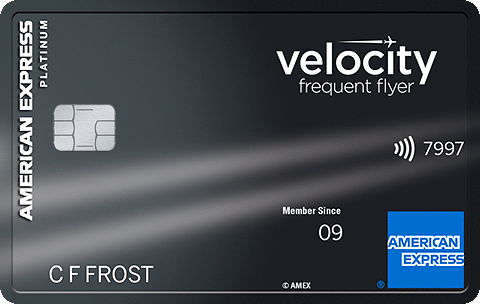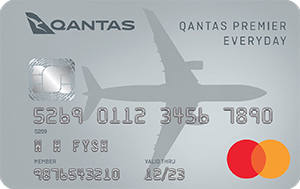
Hi, I’m a personal finance expert who loves to help you out! I’ll answer your question within a business day. Pinky swear.

Back in 2012, as a country we were collectively paying interest on $37 billion of credit card debt. By the start of this year, we had managed to pay that down to $28 billion, according to Reserve Bank of Australia data (1). But, with so many Aussies now unemployed – and with our economic future uncertain, to say the least – that number may start creeping back up again.
According to a recent J.D Power Banking Industry Insight survey, 77% of Australians are currently experiencing financial stress, with 24% of survey respondents saying they are feeling “extremely stressed” about their finances. Highlighting some worrying facts, the survey revealed almost three-quarters of respondents have had their finances negatively impacted by the coronavirus crisis.
As for debt, only 38% report having a manageable amount of debt or no debt since the pandemic began, suggesting the majority of Australians are indeed struggling. Digging deeper, the survey showed that one in five (19%) said they couldn’t meet their minimum monthly credit card repayments, while another 11% said they couldn’t make their personal loan repayments and mortgage repayments.
Despite that, it seems many are continuing to rely on their credit cards to see them through. The survey results suggest over a quarter (26%) of Australians are using their credit card more for household necessities, while 22% are using their card more often to pay household bills.

The Cost Of Debt
While in times like these, we do what needs to be done to keep a roof over our head and food on the table, getting into debt – especially expensive credit card debt – should be avoided as much as possible.
Credit cards in Australia have an average purchase rate of 20%. That means, for those of the 60% of Australian cardholders who have a revolving balance (who carry a balance each month and don’t pay it off), they are paying out on average 20% of their balance each year in interest. To put that into context, if you were to have a revolving balance of $5,000, you would pay out around $1,000 in interest each year.
So, what’s the solution? For those who are in a position to do so, paying down credit card debt to get their balance to zero should be the long-term goal. Aside from potentially saving hundreds – or even thousands – of dollars in interest, keeping that credit card balance at zero offers all sorts of benefits.
In this post, we’re not only going to reveal those benefits, we’ll also look at the various strategies that can get you to your goal of a zero balance, as well as how you can stay at zero – without having to cut up all your cards.

How To Get To Zero
So, you want to pay down your credit card debt and get to zero. How are you going to make that happen? First up, you will need to take stock of your situation, and then set yourself some goals. From there, you will have a few different strategies to choose from, the most suitable of which will depend on where you are now – and where you want to be.

Take Stock
Proper adulting means being aware of your finances. While the process may be boring – and in some cases, unpleasant – knowing exactly where you stand financially is key to sorting out any problems you may have, which includes credit card debt.
Time to budget. Start by working out your monthly income, and then identify all your necessary expenses. These will include your mortgage (or rent), utilities, petrol and food costs, and will likely remain unchanged month to month.
From there, look at how much you usually pay out on extras. While certain expenses may be down right now thanks to coronavirus – think gym membership fees, commuting costs, dinners out, and drinks with friends – it won’t be long before all those extras start sneaking back in and draining your coffers.
It could be a good idea to look at how much you paid out each month on all those extras pre-crisis, to then decide where you can cut back once restrictions start easing. Once you’ve set aside enough to cover these costs plus your essentials, you can see how much you have left over to pay down the balance on your credit card.
So, what about that credit card debt? Now you know where you stand with regards to your incomings and outgoings, you will need to take a closer look at your credit cards. If you have more than one card – or more than one type of debt, such as a personal loan or car loan – take note of how much interest you are paying on each, how much repayments are, when repayments are due and the total balance owing on each.

Set Yourself A Goal
For the most part, it’s easier to stay motivated with a goal in mind – but that goal needs to be attainable. If you have a huge credit card debt that you know will take years to pay off, staying motivated over time will be challenging. Instead, try setting smaller goals, so you can celebrate each win before moving on to the next one.
If you have a large lump of credit card debt you want to pay off, say $20,000, you could split that into four chunks of $5,000. So, your first goal would be to pay off $5,000. Once you’ve managed to pay that off, you will feel like you have achieved something, making you more motivated to pay off the next $5,000.
Alternatively, if you have a number of credit card balances to pay off, or a variety of different types of debt, you could set yourself the goal of paying off one at a time. Once you’ve celebrated a win on that first debt, move onto the next, and then the next.
Whatever way you choose to do it, the idea is to make your debt less intimidating, creating achievable goals that will keep you motivated over time.
TIPStop. Using. Your. Card. While it may not be something you want to hear, continuing to spend on your credit cards will make it infinitely harder to pay down your debt. Switch to debit and stick to your budget. It’ll be worth it in the long run. |

One-By-One Method
Now you’ve set your goals, it’s time to start working on them. If you’ve chosen to work on paying off your debts one-by-one, there are two popular strategies to choose from.
Avalanche StrategyWith this debt elimination strategy, also known as debt stacking, you start tackling your debts by paying them off in order from the highest interest rate to the lowest. To make it work, you need to pay the minimum payment on all of your accounts, while putting as much extra money as possible towards the account with the highest interest rate. Once that debt is paid off, start paying as much as you can on the account with the next highest interest rate. You then continue this process until all your debts are paid. Every time you pay off an account, you will free up more money each month to put towards the next debt. And because you are paying down your debts with the highest interest rate first, you will pay less in interest overall, allowing you to get out of debt faster. As this method typically takes longer before you see progress, you may need extra motivation to stick with it. For those who need smaller wins, the snowball method may be more appealing. Snowball StrategyWith this strategy, you pay off your debts in order from the smallest balance to the largest – regardless of the interest you are paying on each. When utilising this strategy, you need to pay the minimum payment on all your accounts, while putting as much extra money as possible towards the account with the smallest balance. Once the smallest debt is paid off, move on to the debt with the next smallest balance, and continue with this process until all your debts are paid. This strategy can work well if you have a number of small debts to pay off, or if you need a series of small wins at the start to keep you motivated over a longer journey. While it may see you paying more in interest overall – and taking longer to clear your debt as a result – it can allow you to see progress as quickly as possible, getting rid of each small debt and putting it out your mind. |

Consolidate Your Debt
An alternative option to knocking down your debts one by one is to consolidate them, either onto a loan or a balance transfer card.
Balance Transfer CardWith a balance transfer card, you transfer the balance from your existing cards onto a new card to benefit from a much lower balance transfer rate over an introductory period. Using that introductory period to pay down your debt, you will pay less in interest, with the goal of clearing your debt faster. Sounds easy enough? It can be, but you need to be disciplined. Here are our top tips for making a balance transfer work: Avoid spending on the new card. Not only will new spending make it harder to pay off your transferred balance, you will also find that when you may a payment, it will go towards paying down the balance with the highest interest first. So, while you may think you are paying off your transferred balance, you are actually only paying off your new purchases. Create a repayment schedule. Work out how much you will need to pay off each month to clear your transferred balance within the introductory period. It can help to set up an automatic payment each month to ensure this happens. Choose the right balance transfer card. Cards that encourage spending, such as rewards cards and those with bonus rewards points are not the best choice if your sole goal is to pay down your debt. Instead, choose a simple, low cost card with a great offer and concentrate on paying down your debt. Rewards cards can wait until your balance is at zero. Understand your eligibility. Card providers have been pulling back on intro offers such as balance transfers, while also tightening their eligibility requirements for approval. If you want to make this strategy work for you, make sure you are eligible – and that you find an offer that allows you to clear your debt within the intro period. Check the small print. Read the terms and conditions carefully and watch out for balance transfer fees, limits on the amount you can transfer, and eligibility requirements. Also pay attention to what the balance transfer rate reverts to at the end of the intro period – just in case you don’t manage to pay off your transferred balance. |

Debt Consolidation LoanIf a balance transfer doesn’t work for you, another option could involve applying for a personal loan. By consolidating all your debts into one loan, it could make them easier to manage, while making them considerably less stressful. However, as with a balance transfer, there are factors to consider if you want to make a debt consolidation loan work for you. Choose the right loan. While you will need to choose a repayment schedule that fits within your monthly budget, it’s important to keep the loan term as short as possible to minimise the amount of interest you pay overall. Check whether you can make extra payments without penalty, and if you can pay off the loan early if you think that might be an option. Clear your debt with a fixed repayment schedule. Rolling your debts into one loan can offer any number of benefits, one of the most important of which is its set repayment schedule. Unlike credit card debt, which only requires you to make a minimum repayment, you will pay off a certain amount on your loan each month. This could see you clearing your debt faster if you lack the initiative to do it on your own. Be aware of how much it will cost overall. Bundling debts also has its downsides. Depending on the debts you are consolidating, you may end up being in debt longer, while paying more in interest if you choose a consolidation loan. And there’s not only interest to consider, fees can really add up too. Don’t add to your debt. This applies to balance transfer cards and debt consolidation loans alike: when you move your old debts onto a new card or loan, don’t start spending, just because you can. |

TIPAdd to savings or pay down debt? While having money put away is a solid move financially, if you have high interest debt, it could be worthwhile thinking about whether those savings may be put to better use clearing your debt. Your savings are earning 2-3% p.a. in interest, and your debt is costing you 20% p.a. You do the maths. |

Get Professional Advice
No matter which strategy you are considering, if you are looking to pay down debt, getting some clear financial advice is probably a good idea. And no, we’re not talking about those oh-so persuasive ads you see on daytime TV. If you need some help with strategy, you could engage the services of a financial adviser. Or if you’re really struggling, opt for financial counselling.
Financial counselling is a free and confidential service offered by community organisations, community legal centres and some government agencies. As skilled professionals, financial counsellors can help with financial problems you are having, such as bills or fines you’re struggling to pay; tax debts; gas, electricity or phone disconnection; being harassed by debt collectors; or being evicted from your house.
After a thorough discussion, your financial counsellor may suggest ways to improve your financial situation; see if you’re eligible for government concessions or support; talk to your creditors about repayment arrangements; or help you apply for a hardship variation. You may also talk through the risks of bankruptcy and debt agreements, to then discuss the alternatives.
If this sounds like something that could help you, call the National Debt Helpline on 1800 007 007, which is open from 9.30am to 4.30pm, Monday to Friday. Alternatively, visit the government’s MoneySmart website to find a financial counsellor near you.
TIPIf you’re struggling with your repayments – or you simply want to pay down your debts – talking to your provider is usually a good place to start. Many card providers are now offering support packages for cardholders struggling financially due to coronavirus. Your card provider will discuss your situation, and together you can find the solution that best suits either your needs, or your goals. |

How To Stay At Zero
You’ve paid off your credit cards. Congratulations! You got that balance to zero. So, how do you keep it there? Well, while some people choose to cut up their cards and say goodbye to credit forever, there are ways you can continue to use your credit cards day-to-day while keeping your balance at zero.
Track Your Spending
When we use credit cards, it can be difficult to keep track of our spending. Not only that, paying with plastic just doesn’t feel like we are spending actual money. The combination of these two factors can lead to overspending, which is why tracking spending is so important when it comes to keeping credit card balances down month-to-month.
Tracking your spending is a way to take control of your money. Not only will it help you to keep track of what is going in and out of your account, it should also help you become more accountable for your spending, which should result in you spending less. So, how should you go about tracking your spending?
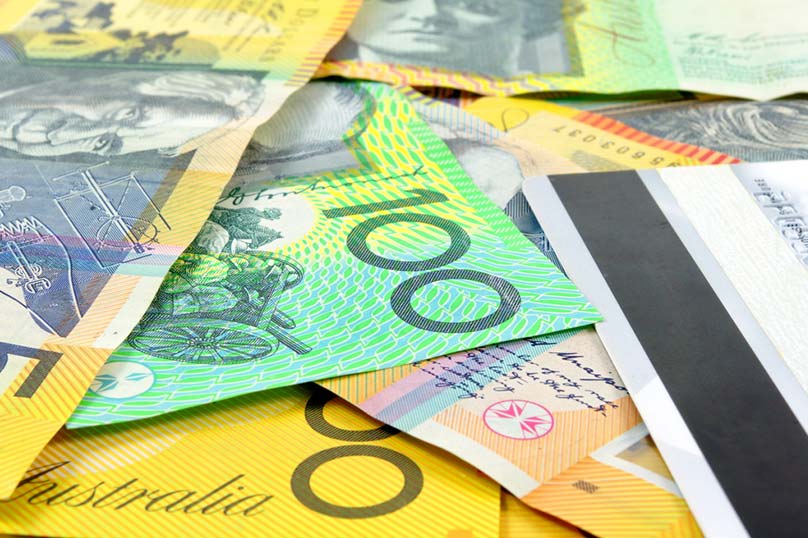
|
Use an app: Using a purpose-built app will likely be the easiest way to track your spending, as it does all the hard work for you. An app can categorise your spend, allowing you to see how much you are spending and where you can cut back. Some apps also allow you to set spending limits and reminders. Review your statements and receipts: When you use your credit card, keep your receipts. Every few days, match those receipts to your online credit card statement. This not only helps you to keep track of your spending, it will also allow you to see if there are any fraudulent transactions on your account. Write it down: Perhaps the most old school option, with this option you write down each transaction, including the amount, the item or store name, and the date. You can either do this in real time, or at the end of each day using your receipts. |
At the end of each week – or each month, once you’ve got the hang of it – take time to see how you’re tracking. Look at your transactions to see where your money is going. Think about where you could spend less, and work on making changes the following week.
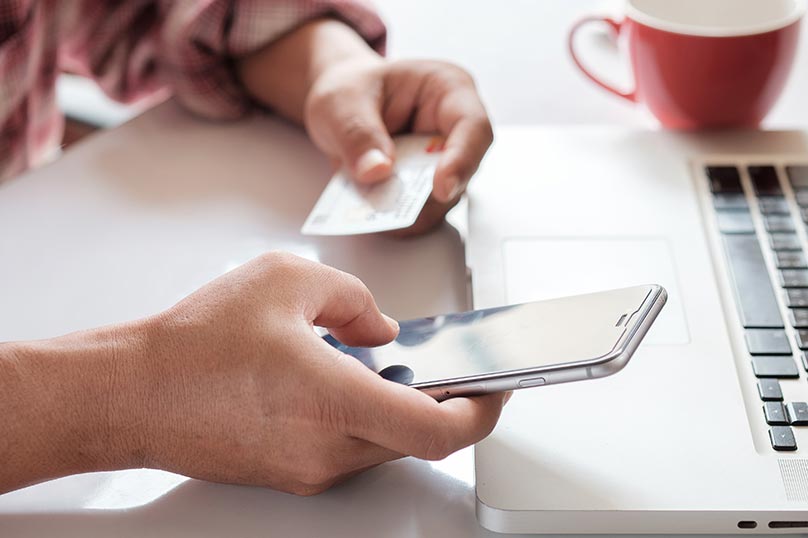
Think Before You Shop
While tracking spending can allow you to see where you’ve done well – and where you could do better – it’s what you do when you’ve got your card in your hand that really makes a difference. Which is why it’s important to make the effort to think before you shop.
There are plenty of ways you can do this. Aside from simply being more mindful when you spend, you could try to incorporate the following into your day-to-day routine.
Delete your auto-filled credit card details when shopping online. You could also make a rule that when you shop online, you wait a day or two instead of buying straightaway.
Freeze your card, literally. Some people put their credit card on ice, which means they have to wait for it to thaw before they can use it. This is to help curb impulse buys, however, it’s safe to say this wouldn’t work for online shoppers or those who use their phone to pay for things when out and about.
Swap cards with your partner. No, this isn’t a way to control your partner’s spending, or have your partner control yours. Instead, it’s supposed to make you more accountable, as you have to explain your spending to your partner in order to use your card.
Set limits for your spending. With your budget in mind, you should know just how much you can spend in each category. Be strict with your spending, and use your card’s app to set limits if necessary.
Allow little treats. Once you have your debts paid off, it can be easy to celebrate a bit too hard. Instead of getting back into the habit of overspending just because you can, create some room in your budget for little treats each month.
Before you shop, ask yourself:
|

Pay Off Your Balance Once A Week (Or More)
Keeping on top of your balance plays a huge role in keeping your balance at zero. Instead of waiting until the end of the month to pay off your balance, it can be helpful to pay it off once a week – or more – until you get used to keeping your balance at a minimum. Some cardholders clear their balance once a week or so, while others pay off each transaction as they make it.
Build An Emergency Fund
One of the great things about credit cards is that they’re there for you when you need them most. Whether your car needs urgent repairs or your boiler explodes, whether you need root canal treatment or your dog breaks its leg, if you don’t have the funds to cover the cost, you can put it on your card.
But, while credit cards are handy to have in an emergency, putting large sums on your card that you can’t pay off straight away will land you straight back into debt. Instead, try to build up your savings so that you have something put away for emergencies.
Close Unnecessary Cards
If you have a number of credit cards, the temptation to spend may be hard to resist. Consider closing cards you no longer need (especially those that have high annual fees), or think about lowering your credit limits to keep temptation to a minimum.

Advantages To Staying At Zero
Looking for motivation to stay at zero? Here are our top five reasons to pay down your credit card to get to zero – and stay at zero.
Less Stress
Being in debt is stressful. Not only do you have to keep track of multiple repayment dates and make sure each payment is made on time, you may also be worrying about how you are going to afford those repayments on top of everyday spending.
And if you don’t keep on top of your debts, you will have accruing interest and perhaps fees to think about too.
Improve Your Credit Score
When you have a heap of unpaid debts, it can negatively affect your credit score. However, as you work on paying down each account balance and make each repayment on time, your credit score should improve.
No Interest
When you carry a balance on your credit card month-to-month, you will pay interest on that balance at your card’s standard rate. On top of that, if you fail to clear your balance at the end of the month, all purchases going forward will start accruing interest from the day they are made.
By clearing your balance by the due date each month, not only will you not pay interest on that balance, you will enjoy interest free days on your purchases (as set out in your card’s terms).
Better Choice Of Cards
When you carry a balance, you really want a card with the lowest possible interest rate. Needless to say, low rate cards aren’t exactly thrilling. However, when you pay off your balance each month, you can opt for more enticing options, such as rewards cards and platinum and black cards.
As these cards tend to have a higher interest rate, they do not work well for cardholders who carry a balance. But, as long as you clear your balance, you can take advantage of their extras (while bearing in mind the extra cost you will likely pay in annual fees).
Easier To Apply
When you apply for a credit card, your card provider will look at your incomings and outgoings to assess whether you can afford to take on the risk of a new card. If you have a number of revolving balances, you may be deemed too high risk, leading your application to be declined.

Disclaimer: The information contained within this post is general in nature and does not take into account your personal situation. You should consider whether the information is appropriate to your needs, and where appropriate, seek professional advice from a financial adviser.
Sources
1. https://www.smh.com.au/money/borrowing/minimise-your-debt-pile-starting-with-your-credit-card-20200511-p54rta.html
2. Photo source: Pexels

Pauline Hatch
Pauline is a personal finance expert at CreditCard.com.au, with 9 years in money, budgeting and property reporting under her belt. Pauline is passionate about seeing Aussies win by making their money – and their credit cards – work smarter, harder and bigger.
You might be interested in

Credit Card Types
Credit Card Fraud Statistics

Tips & Guides
Complete Guide to the Velocity Frequent Flyer Program
Recently Asked Questions
Something you need to know about this card? Ask our credit card expert a question.
Ask a question
Hi, I’m a personal finance expert who loves to help you out! I’ll answer your question within a business day. Pinky swear.


